 COSMIC MAGNETISM OF THE NEARBY UNIVERSE |
 ULTRA HIGH ENERGY COSMIC RAYS |
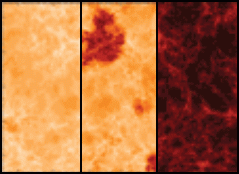 EPOCH OF REIONISATION |
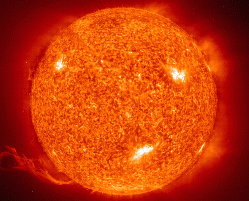 SOLAR PHYSICS AND SPACE WEATHER |
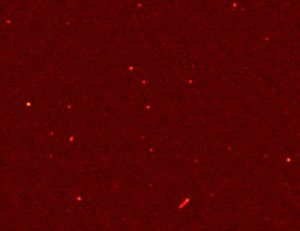 DEEP EXTRAGALACTIC SURVEYS |
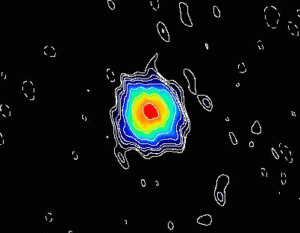 TRANSIENTS AND PULSARS |
Key Science Projects
“Key Science Projects” (KSP) are astronomical applications that help to drive the design of LOFAR. For each KSP a team of astronomers is involved with ASTRON in realising the required technical capabilities.
Cosmic Magnetism Key Science Project
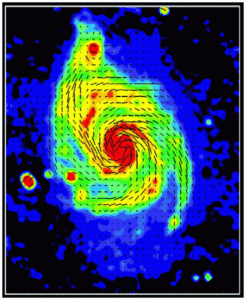 The International Key Science Project "Cosmic Magnetism of the Nearby Universe" studies magnetic fields in the universe by observing polarized radio synchrotron emission with LOFAR. Faraday screens and rotation measure synthesis/Faraday tomography will be used to investigate the 3-D structure of local magnetic fields in the Milky Way and probe the magneto-ionic structure of the very local ISM surrounding the Sun. Spectro-polarimetry with LOFAR will allow study of the so far unexplored domain of very small Faraday rotation measures and weak magnetic field strengths. It will address the astrophysics of objects such as dwarf galaxies, galaxy halos, nearby galaxy clusters, and intergalactic filaments related to the formation of large-scale structures, through ultra-deep observations of the diffuse polarized emission and Faraday rotation of polarized background sources. For the first time we might detect magnetic fields and tenuous warm gas in the intergalactic medium.
The International Key Science Project "Cosmic Magnetism of the Nearby Universe" studies magnetic fields in the universe by observing polarized radio synchrotron emission with LOFAR. Faraday screens and rotation measure synthesis/Faraday tomography will be used to investigate the 3-D structure of local magnetic fields in the Milky Way and probe the magneto-ionic structure of the very local ISM surrounding the Sun. Spectro-polarimetry with LOFAR will allow study of the so far unexplored domain of very small Faraday rotation measures and weak magnetic field strengths. It will address the astrophysics of objects such as dwarf galaxies, galaxy halos, nearby galaxy clusters, and intergalactic filaments related to the formation of large-scale structures, through ultra-deep observations of the diffuse polarized emission and Faraday rotation of polarized background sources. For the first time we might detect magnetic fields and tenuous warm gas in the intergalactic medium.
For more information about the Cosmic Magnetism KSP, click here.
Cosmic Rays Key Science Project
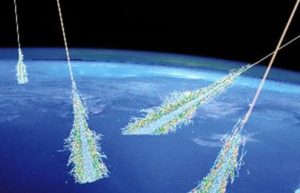 LOFAR offers a unique possibility in particle astrophysics for studying the origin of high-energy cosmic rays (HECRs) at energies between 1015 - 1020.5 eV through the detection of air showers of secundary particles caused by interaction of cosmic rays with the Earth's atmosphere.
LOFAR offers a unique possibility in particle astrophysics for studying the origin of high-energy cosmic rays (HECRs) at energies between 1015 - 1020.5 eV through the detection of air showers of secundary particles caused by interaction of cosmic rays with the Earth's atmosphere.
Both the sites and processes for accelerating particles are unknown. Possible candidate sources of these HECRs are shocks in radio lobes of powerful radio galaxies, intergalactic shocks created during the epoch of galaxy formation, so-called Hyper-novae, Gamma-ray bursts, or decay products of super-massive particles from topological defects, left over from phase transitions in the early universe.
Epoch of Reionisation Key Science Project
 One of the most exciting applications of LOFAR will be the search for redshifted 21cm line emission from the Epoch of Reionisation (EoR). It is currently believed that the Dark Ages, the period after recombination when the Universe turned neutral, lasted until around redshift z=20. Wilkinson Microwave Anisotropy Probe (WMAP) polarisation results appear to suggest that there may have been extended, or even multiple phases of Reionisation, the start possibly being around z~15-20 and ending at z~6. Using LOFAR the redshift range from z=11.4 (115 MHz) to z=6 (180 MHz) can be probed.
One of the most exciting applications of LOFAR will be the search for redshifted 21cm line emission from the Epoch of Reionisation (EoR). It is currently believed that the Dark Ages, the period after recombination when the Universe turned neutral, lasted until around redshift z=20. Wilkinson Microwave Anisotropy Probe (WMAP) polarisation results appear to suggest that there may have been extended, or even multiple phases of Reionisation, the start possibly being around z~15-20 and ending at z~6. Using LOFAR the redshift range from z=11.4 (115 MHz) to z=6 (180 MHz) can be probed.
For more information about the Epoch of Reionisation KSP, click here
Solar Physics and Space Weather
Surveys Key Science Project
An important goal that has driven the development of LOFAR since its inception is to explore the low-frequency radio sky by means of a series of unique surveys. Low-frequency radio telescopes are ideally suited for carrying out large-sky surveys, because of their large instantaneous fields of view and the all-sky nature of their calibration. Four topics have been identified as drivers for the proposed surveys. Three of these are fundamental areas of astrophysics for which LOFAR is likely to make substantial contributions. They are:
- 1. Formation of massive galaxies, clusters and black holes using z ≥ 6 radio galaxies as probes,
- 2. Intercluster magnetic fields using diffuse radio emission in galaxy clusters as probes,
- 3. Star formation processes in the early Universe using starburst galaxies as probes,
- 4. Exploration of new parameter space for serendipitous discovery.
In addition to these, a broad range of topics are expected to be addressed by the surveys team. They span from magnetic fields and the interstellar medium in nearby galaxies, to physics of radio sources (their initial and final stages in the evolution), up to large scale structure of the Universe and its evolution, using clustering of radio sources, baryonic oscilations and gravitational lensing.
Transients Key Science Project
 Transient sources are one of the Key Projects of LOFAR. Under its remit come all time-variable astronomical radio sources, including pulsars, gamma-ray bursts, X-ray binaries, radio supernovae, flare stars, and even exo-planets. With its continuous monitoring of a large area of sky, it is hoped that LOFAR will detect many new transient events, and provide alerts to the international community for follow-up observations at other wavelengths. The project has been subdivided into five basic scientific working groups:
Transient sources are one of the Key Projects of LOFAR. Under its remit come all time-variable astronomical radio sources, including pulsars, gamma-ray bursts, X-ray binaries, radio supernovae, flare stars, and even exo-planets. With its continuous monitoring of a large area of sky, it is hoped that LOFAR will detect many new transient events, and provide alerts to the international community for follow-up observations at other wavelengths. The project has been subdivided into five basic scientific working groups:
- Jet sources: AGN, GRBs, accreting white dwarfs, neutron stars and stellar-mass black holes
- Pulsars: classical radio pulsars, AXPs, RRATs
- Planets: solar system objects and exoplanets
- Flare stars: M, L, and T dwarfs and active binaries
- Serendipity: hitherto unexplored parameter space
Public web page: http://www.transientskp.org/